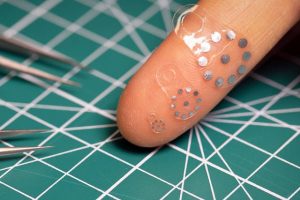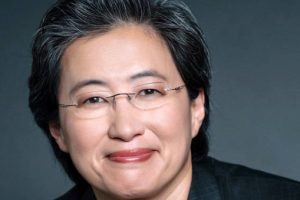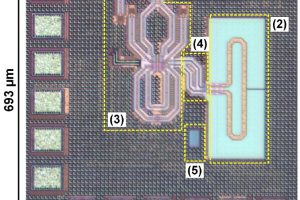There are a few ways to harvest 10μW from the environment but, perhaps, none so much fun as a generator based on a ‘drinking bird’ toy built by researchers in China. Dubbed a DB-THG (drinking-bird triboelectric hydrovoltaic generator), power is extracted from the movement of the bird by the rubbing action of different materials – think rubbing a balloon on ...
Research
The latest electronics research news from within the industry and universities from around the world.
Simple idea lets ultrasound sense the unsensable
An ultrasound-based sensing technique developed for medicine could have wider application. The question that inspired the technique was: how do we spot leaks from the gut after gastric surgery? Neither ultrasound, CT or MRI scanning could be used to remotely determine local chemistry around the internal wound, according to Northwestern University, which teamed up with the Washington University School of ...
Imec honours AMD CEO for technology development and industry leadership
World-renowned semiconductor research lab Imec has named Lisa Su, chair and CEO of AMD, as the winner of the 2024 Imec Innovation Award. “Since taking the helm of AMD in 2014, Dr Su’s technological acumen and leadership have propelled the company to the forefront of semiconductor technology development,” said Imec CEO Luc Van den hove. “Under her leadership, AMD has ...
Storing a petabit on a single optical disc
100Tbyte of information could be stored on each side of a optical disc the same size as a DVD, according to the University of Shanghai for Science and Technology (USST), which worked with the Shanghai Institute of Optics and Fine Mechanics (SIOM) to build a technology demonstrator. Artists impression This is a far higher than current magnetic recording techniques, and ...
ISSCC: 235GHz sensor measures distance accurately
Researchers at the University of Michigan have made what is in effect a very agile ruler using a novel sub-THz radar technique, and reported it last week at the International Solid-State Circuits Conference. Its 235GHz antennas and the core active components are integrated on a single IC, and across a desktop it measures the range to a target with sub-mm ...
ISSCC: 200A chiplet dc-dc converter for 1kW processors
Instantaneous power demand on large processor ICs is getting crazy, with a thousand amps flowing at times. Pondering future system-in-package designs that will consume around 1kW, Intel has used a 16nm finfet cmos process to created a prototype 52 phase buck converter that can be built into such ICs, which it revealed at the International Solid-State Circuit Conference in San ...
ISSCC: 130Top/s embedded AI accelerator for robotics
Renesas has developed an AI accelerator for real-time processing of algorithms in robots, and described it at the International Solid-State Circuits Conference in San Francisco. This accelerator appeared in a product a month later The foreseen robot needs conventional processing for planning and control, alongside AI processing at ~100Top/s peak for vision-based environmental recognition, with low power dissipation to avoid ...
ISSCC: Passive tag drinks Wi-Fi and spits Bluetooth
Zhejiang University and Microaiot have created a passive crystal-less tag IC that both receives its instructions and is powered by Wi-Fi, and sends its responses over Bluetooth. They described the device at ISSCC in San Francisco this week. The tag has two antennas, with both used to extract power from the incident Wi-Fi field. One also receives the Wi-Fi (802.11b) ...
ISSCC Piezoelectric energy transfer in dc-dc converter
Despite there potential efficiency, piezoelectric power converters are a technology that has never become popular, even though the power transfer component is thin and flat, instead of boxy like an inductor, and piezoelectrics are quick and simple to make – much like a ceramic capacitor. The flip-side are the disadvantages, warranting a mushrooming component count to temper them. Enter the ...
ISSCC: Audio amplifiers and ADCS
International Solid-State Circuits Conference in San Francisco always seems to make space for audio amplifier developments, and this year is no exception, with some extraordinary distortion and noise figures from Class-D amplifiers, plus a sophisticated Class-H scheme to improve headphone amplifier efficiency. Starting with that headphone amplifier: Class-H is a way to decrease the dissipation of an analogue output stage ...
 Electronics Weekly Electronics Design & Components Tech News
Electronics Weekly Electronics Design & Components Tech News


